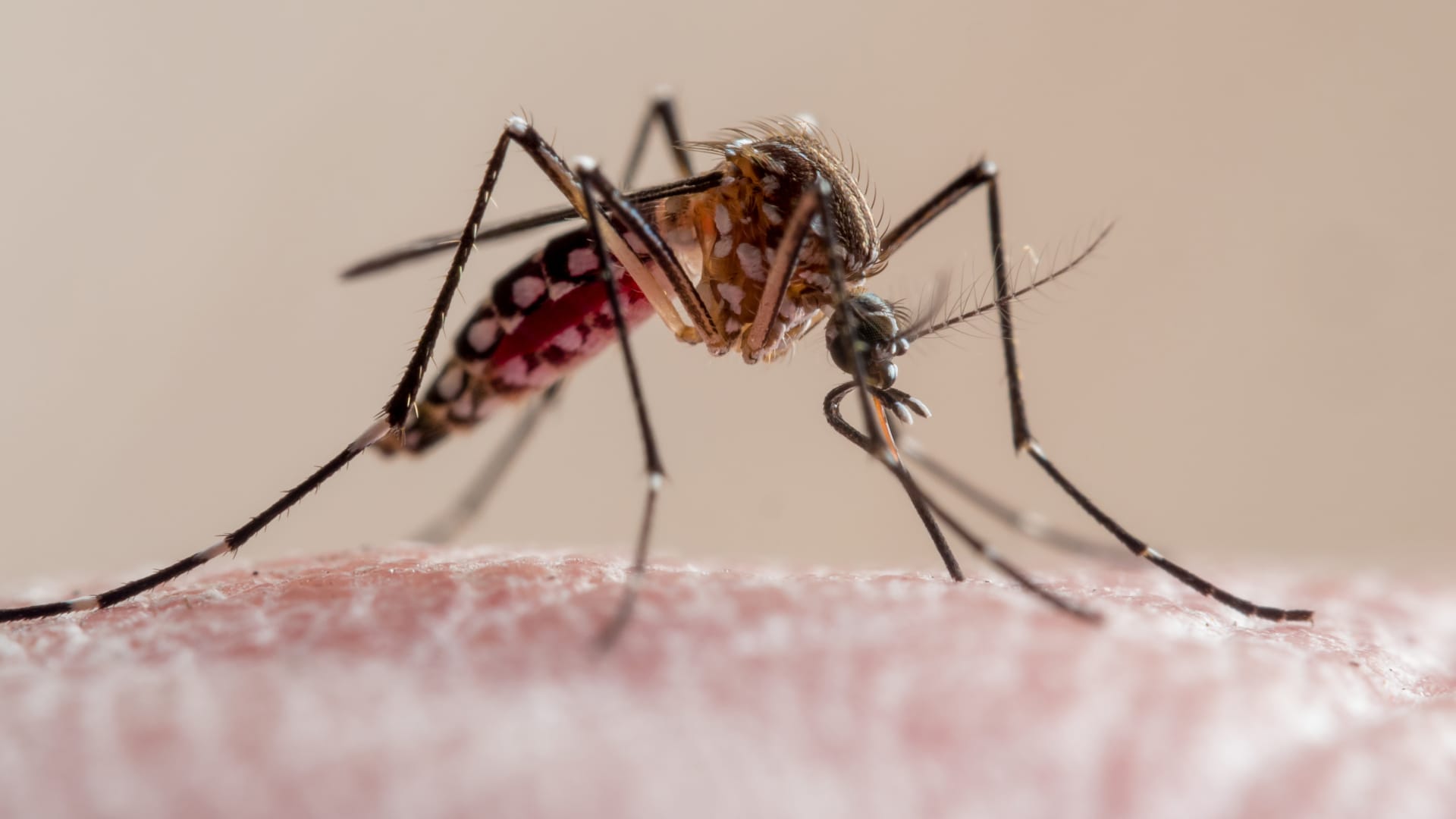Close-up of a yellow-fever mosquito biting human skin, it’s a culicidae vector of malaria, yellow fever, chikungunya, dengue and zika virus in Brazil, known locally as mosquito da dengue.
Joao Paulo Burini | Moment | Getty Images
Nigeria this week joined Ghana in provisionally approving a new malaria vaccine developed by scientists at the University of Oxford, potentially paving the path to save millions of lives and boost Africa’s long-term economic prospects.
Africa’s largest economy, which accounts for 31.3% of all malaria deaths worldwide according to the World Health Organization, granted regulatory clearance for the rollout of the R21/Matrix-M malaria vaccine on Tuesday, just a week after Ghana became the first country to clear the new shot.
Both nations have approved the vaccine for use on children aged between five and 36 months — the age group at highest risk of death from the mosquito-carried disease.
The University of Oxford Jenner Institute, which developed the vaccine, estimates that malaria kills around 800,000 people per annum. These casualties occur predominantly in sub-Saharan Africa, where one in five childhood deaths is associated with the disease. The WHO assessed that 241 million clinical cases of malaria occurred in 2020, resulting in 627,000 deaths, mostly among children in Africa.
“This marks a culmination of 30 years of malaria vaccine research at Oxford with the design and provision of a high efficacy vaccine that can be supplied at adequate scale to the countries who need it most,” Professor Adrian Hill, chief investigator on the R21/Matrix-M program and director of the Jenner Institute, said upon the announcement of Ghana’s regulatory clearance on April 13.
A health worker vaccinates a child against malaria in Ndhiwa, Homabay County, western Kenya on September 13, 2019 during the launch of malaria vaccine in Kenya.
Brian Ongoro | AFP | Getty Images
In 2021, the WHO signed off on GSK’s RTS,S malaria vaccine for rollout across sub-Saharan Africa, following pilot programs in Ghana, Kenya and Malawi, which tracked 800,000 children since 2019. Trials so far have suggested that R21 is likely to be far more potent in combating the disease.
The R21 vaccine was the first of its kind to pass the WHO’s efficacy goal of 75%, though data from final-stage trials is still pending.
The vaccine is being manufactured by India’s Serum Institute, which has suggested it has the capacity to supply around 200 million doses per year, while the vaccine is reportedly both cheap to produce and straightforward to transport.
‘Major boost to long-run growth’
The U.S. Centers for Disease Control and Prevention highlights that malaria is a great drain on many national economies, especially as many poorer nations are among the most affected. As such, the disease “maintains a vicious cycle of disease and poverty,” the CDC says.
While the economic impact of the vaccine will depend on a multitude of presently unknown factors — such as logistical challenges, the extent to which immunity can be provided to older children and adults, and the duration of immunity — a successful rollout could have “major positive economic implications,” according to William Jackson, chief emerging markets economist at Capital Economics.
Lower childhood mortality will reduce the population’s costs of prevention and treatment, with various estimates suggesting that around 3.8% of household income may be spent on such measures in heavily affected countries, Jackson noted.
“It would reduce the burden on public healthcare spending too. These resources could be freed up for other consumption or saved, which would increase the pool of resources that can be used for domestic investment,” Jackson said in a research note Thursday.

“Lower child mortality may also feed through to lower fertility rates in the region — which are currently very high. That, and the reduced need to care for sick children, may in turn allow more women to enter the workforce, raising labour force participation rates and increasing the labour supply.”
Should the vaccine offer lasting immunity for older children and adults, fewer malaria-related absences from school and work could increase human capital and labor supply, respectively, Jackson suggested.
“Of course, labour supply is not an impediment to growth in the region. Working-age populations are growing rapidly, but taking this impact together with the reduced cost of prevention and treatment, the boost to GDP could be significant,” he added.
Jackson pointed to a study in the American Journal of Tropical Medicine and Hygiene, which found that GDP per capita in malaria-intensive countries grew by 1.3 percentage points less per year than comparable peers between 1965 and 1990. The same study showed that Jamaica and Taiwan recorded a 0.2-0.8 percentage point acceleration in growth per annum relative to peers after eradicating malaria.
A more recent study published in 2019 modelled the impact of a vaccine covering 100% of children under the age of five in Ghana. That particular vaccine had an efficacy rate of 50% against clinical malaria — much lower than the R21 — and of 20% against malaria mortality. The study still estimated a 0.5-percentage point boost per year to GDP growth over a 30-year period at this level of vaccine coverage and efficacy.
“In short, then, the vaccine has the potential to provide a major boost to long-run growth in much of Africa,” Jackson concluded.


